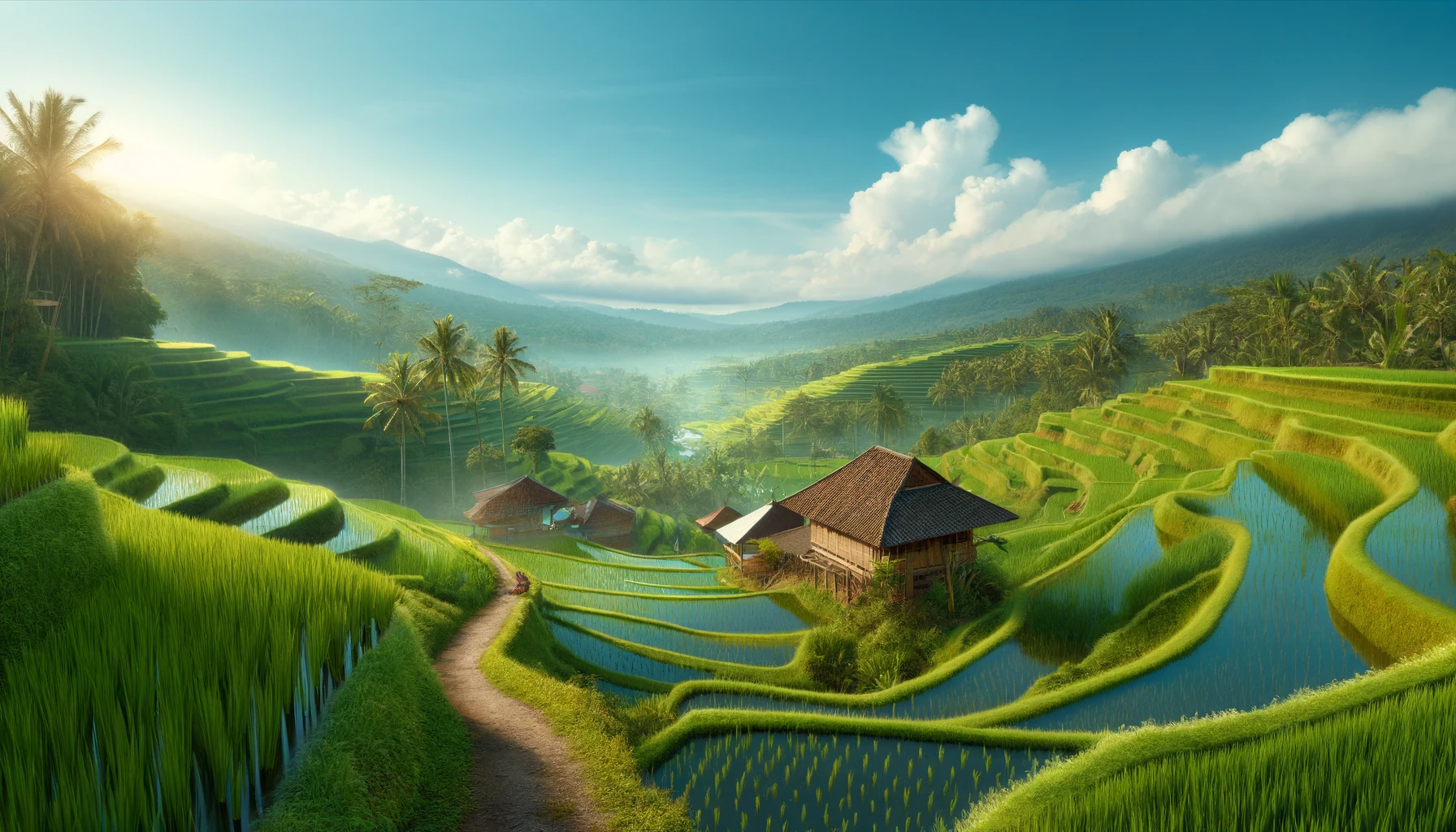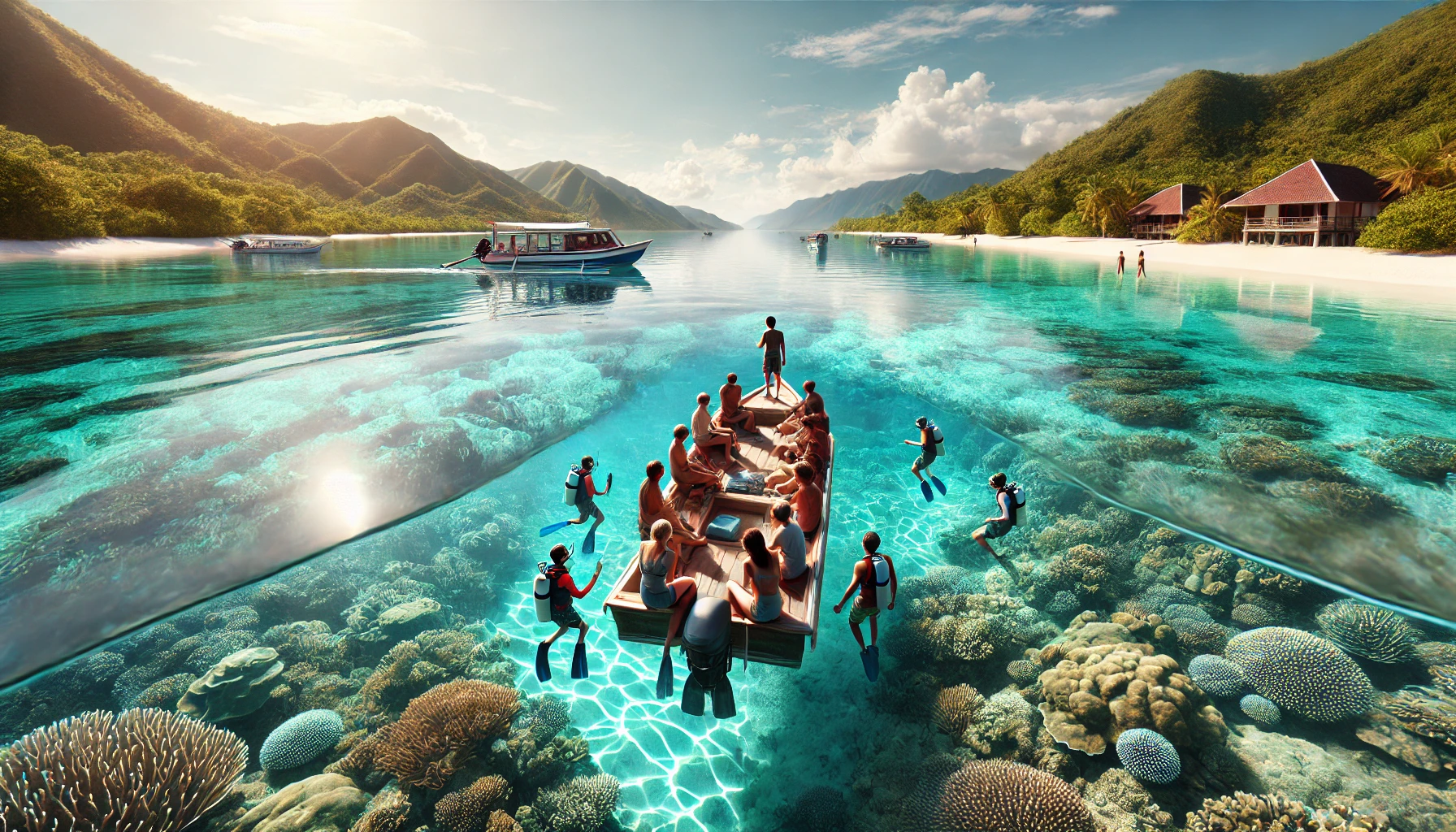Introduction to Indonesia’s Archipelago
Indonesia, a sprawling archipelago with over 18,000 islands, offers an unparalleled opportunity for adventurers and tranquility seekers alike to explore its vast and varied landscapes. From the iconic rice paddies of Bali to the untouched rainforests of Sumatra, island hopping in Indonesia isn’t just a journey through places, but a journey through a diversity of cultures, cuisines, and histories. This guide will provide you with essential insights into making the most of your island-hopping adventure in this tropical paradise.

Why Choose Indonesia for Island Hopping?
The allure of Indonesia as a top destination for island hoppers is evident in its rich mosaic of environments. Each island presents a unique slice of Indonesia’s natural wealth, making every stop a distinct experience. Whether it’s catching the sunrise over a volcano in Bali, diving into the vibrant coral reefs of Raja Ampat, or trekking through the lush jungles of Kalimantan, the ecological and cultural diversity of Indonesia ensures that each visitor’s itinerary can be thrillingly unique yet uniformly mesmerizing.
Beyond the scenic vistas and water-bound adventures, island hopping in Indonesia allows travelers to immerse themselves in local traditions and lifestyles. The archipelago's vast cultural tapestry includes hundreds of ethnic groups, offering an enriching experience of traditional dances, music, crafts, and the unmissable warmth of Indonesian hospitality.
Best Islands for a Memorable Hopping Experience
1. Bali: The Gateway to Paradise
Often the starting point for any island-hopping journey in Indonesia, Bali is famed for its forested volcanic mountains, iconic rice paddies, beaches, and coral reefs. The island is also renowned for its deeply spiritual culture, seen in its temples, yoga retreats, and colorful ceremonies. Bali combines natural beauty with a rich cultural scene, making it an indispensable stop in your Indonesian adventure.
2. Lombok and the Gili Islands: Serene Beaches and Scenic Trails
Just east of Bali, Lombok offers a more untouched alternative to its famous neighbor. With spectacular beaches like Kuta and Senggigi and the majestic Mount Rinjani, Lombok appeals to both beachgoers and hikers. Nearby, the Gili Islands present a laid-back vibe with crystal-clear waters perfect for snorkeling, devoid of the hustle of motorized vehicles.
3. Java: The Heart of Indonesia
Java, the world’s most populous island, is home to 60% of Indonesia’s population and is a powerhouse of cultural and historical sites. From the bustling capital city of Jakarta to the majestic temples of Borobudur and Prambanan near Yogyakarta, Java offers a rich narrative of Indonesia’s historical and cultural evolution. The island also features some of Indonesia’s most active volcanoes, which are available for trekking.
4. Komodo National Park: Land of the Dragons
Situated within the Lesser Sunda chain of the Indonesian archipelago and the rugged habitat of the famous Komodo dragons, Komodo National Park offers one of the world's most impressive wildlife experiences. It also hosts some of the best dive sites with its clear waters and coral reefs teeming with marine life.
5. Raja Ampat: A Diver’s Paradise
Raja Ampat, or the Four Kings, is an archipelago comprising over 1,500 small isles, cays, and shoals surrounding the four main islands of Misool, Salawati, Batanta, and Waigeo in West Papua. Known for its biodiversity, it is considered one of the best diving destinations in the world for its pristine coral reefs and incredibly diverse marine life.
Navigating the Indonesian Archipelago: Transportation and Timing
Getting Around Between Islands
Island hopping in Indonesia is an adventure that requires careful planning, especially when it comes to transportation. The archipelago's expansive nature means that traveling between islands can be an adventure in itself.
Air Travel
For longer distances, air travel is the most efficient option. Indonesia’s domestic airlines serve a broad network that connects major islands and cities, with frequent flights operating from hubs like Jakarta, Bali, and Surabaya. This mode of travel is essential for reaching distant islands such as Papua or the remote parts of Sumatra quickly.
Ferries and Boats
For closer islands or when a more scenic route is preferred, ferries are a reliable and economical choice. The state-run Pelni ships connect many of the far-flung islands, offering a more local travel experience. Additionally, speed boats and local ferries frequently ply the routes between closer islands such as the Gilis and Lombok or Bali and Java, providing flexible schedules for easier island hopping.
Best Time to Visit
Indonesia straddles the equator, offering a tropical climate that's warm and humid year-round. The best time for island hopping largely depends on the dry and wet seasons.
Dry Season (May to September)
The dry season is the ideal time for visiting most islands. The weather is generally sunny, making it perfect for beach activities, hiking, and diving. Bali, Lombok, and the Gili Islands, in particular, are spectacular during these months, offering clear skies and pleasant temperatures.
Wet Season (October to April)
While the wet season can see heavy rains and high humidity, it’s a great time to visit for fewer crowds and lower prices. Some regions, like North Maluku and Raja Ampat, are actually better visited during these months when the seas are calmer and the underwater visibility is at its best.
What to Pack for Island Hopping
Packing light and right is crucial for a hassle-free island hopping experience. Essentials include:
Lightweight Clothing: Breathable fabrics that dry quickly are ideal for the tropical climate.
Swimwear: Essential for enjoying Indonesia’s beautiful beaches and water activities.
Comfortable Footwear: Water shoes for beaches, sturdy hiking shoes for treks.
Rain Protection: A lightweight rain jacket or poncho for unexpected downpours.
Sun Protection: High SPF sunscreen, a hat, and sunglasses to protect from tropical sun rays.
Insect Repellent: To guard against mosquitoes, especially in rural and forested areas.
Water Bottle: A reusable water bottle to stay hydrated and reduce plastic use.
Tips for Responsible Travel in Indonesia
Traveling responsibly is vital to preserving the natural beauty and cultural integrity of Indonesia’s islands. Here are some tips to ensure your travels contribute positively:
Respect Local Customs: Many Indonesian communities have strong cultural traditions. Dress modestly, particularly when visiting rural areas or religious sites, and always ask permission before taking photos of people.
Environmental Care: Avoid single-use plastics, and always dispose of waste properly. Opt for eco-friendly sunscreens to avoid damaging coral reefs.
Support Local Economy: Purchase from local artisans and eat at local restaurants to help support the communities you visit.
Wildlife Interactions: Always maintain a respectful distance from wildlife and never feed or attempt to touch wild animals. Choose wildlife tours and activities that prioritize animal welfare and conservation.
Exploring Indonesia’s Premier Island Destinations


Detailed Guide to Must-Visit Islands
Each island in Indonesia offers a unique experience, rich in natural beauty and cultural heritage. Here’s a deeper look into what makes some of the top islands unforgettable stops on your island-hopping journey.
Bali: The Island of the Gods
Bali is not just a destination; it's an experience. Known for its dramatic dance performances, stunning temples like Tanah Lot and Uluwatu, and vibrant arts scene in Ubud, Bali encapsulates the spiritual and cultural richness of Indonesia. For adventure seekers, the surf breaks of Bali are legendary, and the inland jungle treks offer encounters with scenic waterfalls and tranquil rivers.
Lombok and the Gili Islands: Serene Beauty and Scuba Paradise
Just a boat ride away from Bali, Lombok offers a quieter, perhaps more authentic, experience with spectacular beaches like Selong Belanak and the epic trek to Rinjani volcano. The nearby Gili Islands are a diver's haven, with Gili Trawangan being the most popular for its lively atmosphere and Gili Meno for its tranquility.
Komodo Island: Dragons and Diving
Komodo Island provides a rugged, prehistoric landscape that is home to the world-famous Komodo dragons. The island's Pink Beach, one of only a few in the world, offers fantastic snorkeling with vibrant underwater biota. The Komodo National Park, encompassing several islands, is a biodiversity hotspot, especially rich in marine species.
Raja Ampat: A Diver’s Dream
Located off the northwest tip of Bird’s Head Peninsula in West Papua, Raja Ampat is an archipelago comprising over 1,500 small islands. It’s a part of the Coral Triangle, known for its biodiversity and is considered one of the best diving spots in the world. Above water, its jungle-covered islands are virtually untouched by tourism.
Java: The Cultural Heartland
Java, the administrative and economic heart of Indonesia, offers a contrast between modernity and tradition. Jakarta, the capital, buzzes with an energetic nightlife and a dynamic food scene. Yogyakarta, the cultural soul of Java, presents traditional arts, crafts, and the grand temples of Borobudur and Prambanan.
Responsible Island-Hopping Practices
Engaging with Indonesia’s islands responsibly ensures the preservation of their unique ecosystems and cultures:
Participate in Eco-Tours: Opt for tours that emphasize conservation and respect for wildlife.
Use Eco-Friendly Transport: Where possible, choose less polluting transport options like electric scooters or bicycles.
Stay in Eco-Friendly Accommodations: Support businesses that implement sustainable practices.
Concluding the Island-Hopping Adventure
Island hopping in Indonesia offers an enriching blend of natural beauty, adventure, and cultural immersion. By exploring responsibly, travelers can ensure they leave a positive impact on the islands’ ecosystems and communities. Indonesia’s islands are not just destinations to visit but treasures to protect.
As you plan your journey across this diverse archipelago, remember that the true beauty of Indonesia lies not just in its landscapes but in its potential to inspire a deeper connection with our planet. Each island tells its own story, and each story contributes to the rich narrative of Indonesia. Prepare to explore, discover, and fall in love with the incredible Indonesian archipelago.
At IndoInsider, we continue to bring you the most insightful guides and tips to make your Indonesian travel experience unforgettable. Stay tuned for more adventures and stories from one of the world's most enchanting archipelagos.
